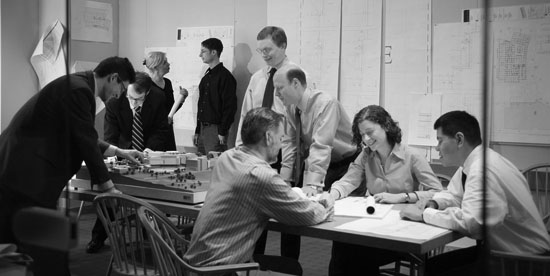
This month Mike Davis, FAIA, president of the Boston Society of Architects (BSA), shared his presentation about the presence and role of emerging professionals within the practice of architecture. He focused on the general decline of young professionals in architecture as well as the apparent lack of young designer involvement with the BSA. Though his first concern is not too surprising given the economic instability of the last few years and the increasing difficulty of the AREs, the latter surprised me.
As someone in the target demographic I have attended exhibitions and events organized by the BSA in additional to utilizing the ARE prep program along with many of my peers. I am able to take advantage of these resources without needing to become a BSA member. One might argue that the financial dues are one of the primary issues, but many larger firms cover these costs (as the case is at PAYETTE) and even then, many of us seem to lack the initiative to join.
In working to alter this pattern one must analyze what a BSA membership offers to incentivize young professionals to join and engage with the organization. Would the BSA consider offering increased opportunities for more young professionals to join a committee or board? And, would such involvement lead to a stronger young professional voice at the BSA? In theory, involvement on that level leads to a stronger sense of ownership and investment in the organization. What if the BSA created more opportunities for various firms to come together and collaborate within the larger architectural community? Does this take the form of design competitions or peer / collaboration groups?
The paradox I see the BSA grappling with is its wonderful openness as a community, which disincentivizes individuals to join formally because many benefits are publicly available. Right now we do not have a defining factor that makes being a member any more attractive than a non-member participant. My hope is that the leadership at the BSA will be proactive in their conversations with young professionals. This will help define specific interest and initiate incentives for stronger involvement. Engaging leaders in similar stages of their career within the organization will undoubtedly create a better sense of ownership and association for young designers looking into the BSA as a resource and a place to come together.
Get to know Mike Davis
@MikeDavisFAIA
Mike Davis FAIA
Bergmeyer Associates, Inc.


